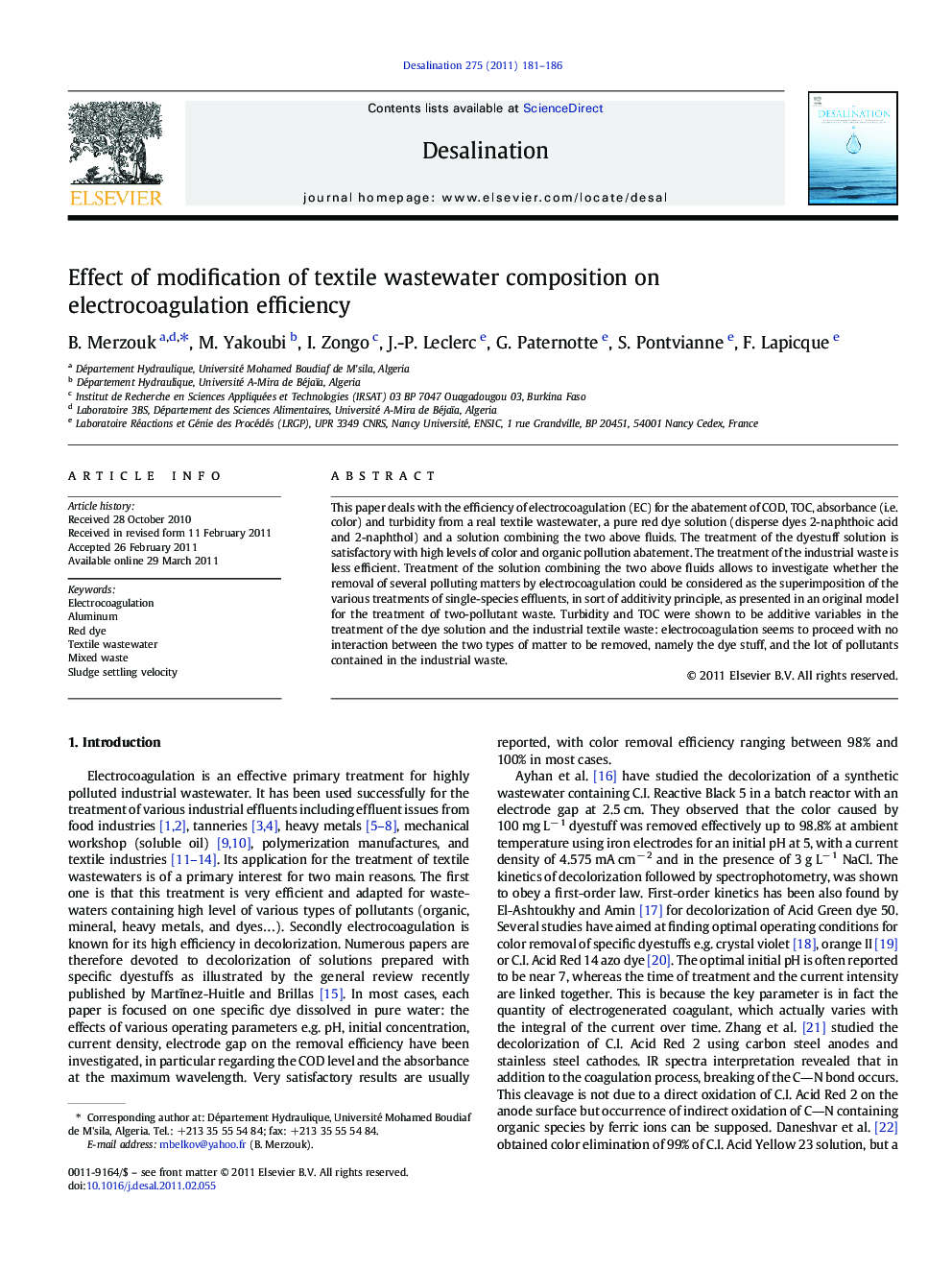| کد مقاله | کد نشریه | سال انتشار | مقاله انگلیسی | نسخه تمام متن |
|---|---|---|---|---|
| 625080 | 1455416 | 2011 | 6 صفحه PDF | دانلود رایگان |

This paper deals with the efficiency of electrocoagulation (EC) for the abatement of COD, TOC, absorbance (i.e. color) and turbidity from a real textile wastewater, a pure red dye solution (disperse dyes 2-naphthoic acid and 2-naphthol) and a solution combining the two above fluids. The treatment of the dyestuff solution is satisfactory with high levels of color and organic pollution abatement. The treatment of the industrial waste is less efficient. Treatment of the solution combining the two above fluids allows to investigate whether the removal of several polluting matters by electrocoagulation could be considered as the superimposition of the various treatments of single-species effluents, in sort of additivity principle, as presented in an original model for the treatment of two-pollutant waste. Turbidity and TOC were shown to be additive variables in the treatment of the dye solution and the industrial textile waste: electrocoagulation seems to proceed with no interaction between the two types of matter to be removed, namely the dye stuff, and the lot of pollutants contained in the industrial waste.
Research Highlights
► Treatment of a dyed industrial waste by electrocoagulation.
► Compared variations of color, turbidity, COD and TOC of the waste.
► Superimposition of the treatments of the dye solution and the industrial waste.
► Evidence of not of interactions between the pollutants during the treatment.
Journal: Desalination - Volume 275, Issues 1–3, 15 July 2011, Pages 181–186